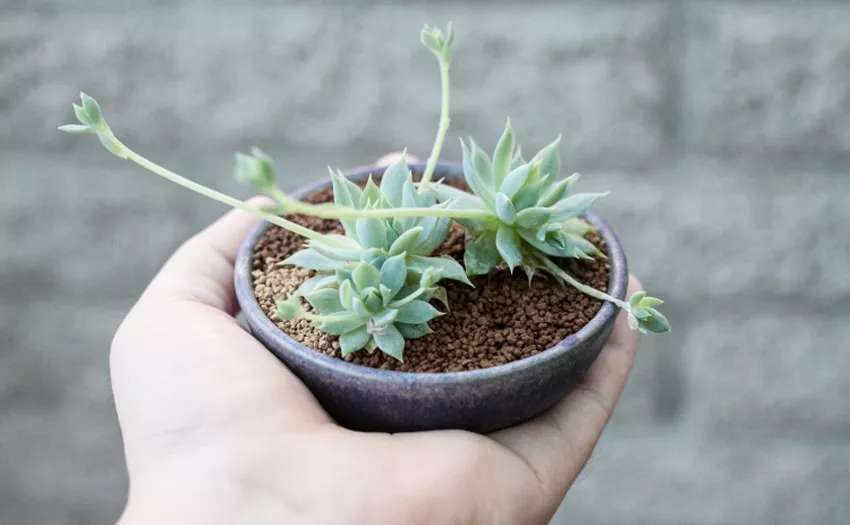Succulent bowls are a delightful addition to any home or garden, offering an array of colors, shapes, and textures that can instantly elevate your decor. While succulents are celebrated for their resilience and low maintenance, proper watering remains a critical aspect of their care. Watering succulent bowls may seem straightforward, but it’s a balance that requires careful consideration.
Choosing the Right Succulents
Before we dive into the intricacies of watering succulent bowls, it’s crucial to select the right succulent species. Succulents come in various shapes and sizes, each with unique water requirements. For succulent bowls, opt for varieties that are well-suited to container gardening. Common choices include Echeveria, Sedum, Haworthia, and Sempervivum. By choosing the right succulents from the start, you set the stage for more manageable watering.
Selecting the Perfect Container
The container in which you plant your succulents plays a significant role in their overall health and growth. It’s important to choose a container with proper drainage. Succulents are highly susceptible to root rot, a condition caused by standing water, so a container with drainage holes is essential. Additionally, select a container that complements your decor and allows for good air circulation around the plants. Succulent bowls come in various materials, including clay, terracotta, and ceramic, so you can choose one that suits your style and environment.
Creating the Ideal Potting Mix
Succulents thrive in well-draining soil. For your succulent bowl, prepare a specialized succulent potting mix by combining standard potting soil with materials that improve drainage, such as perlite or coarse sand. A common recipe is to mix one part potting soil with one part perlite or sand. This mix allows excess water to flow through the soil, preventing the roots from sitting in stagnant water, which can lead to rot.
Understanding the Watering Schedule
Watering succulent bowls is an art that involves understanding the unique water requirements of succulents. Succulents are adapted to arid environments and prefer to dry out between waterings. Typically, the best approach is to adopt a “soak and dry” method. Water the succulent bowl thoroughly, allowing water to flow out of the drainage holes. Then, wait until the top inch or two of the soil is completely dry before watering again. This interval can vary depending on environmental factors like temperature, humidity, and the specific succulent species in your bowl.
Factors Influencing Watering Frequency
Several factors influence how often you should water your succulent bowl:
Climate: In hot and dry climates, you may need to water more frequently. In cooler and more humid climates, less frequent watering may be necessary.
Container Material: The type of container you use can affect how quickly the soil dries out. Clay or terracotta containers tend to dry out faster than ceramic or plastic ones.
Succulent Variety: Different succulent species have varying water requirements. Research the specific needs of the succulents in your bowl.
Season: Succulents typically require less water during their dormant period, which is often in the winter months.
Signs Your Succulent Bowl Needs Water
To gauge when it’s time to water your succulent bowl, look for these signs:
Dry Soil: The top inch or two of the soil should be completely dry to the touch.
Wrinkling or Shriveling: If your succulents appear wrinkled or shriveled, it’s a sign they’re thirsty.
Leaf Drop: Succulents may shed leaves when they lack moisture.
Color Change: Some succulents change color when they need water. They may become more translucent or appear duller in color.
Watering Technique
When you do water your succulent bowl, do so thoroughly. Water until you see water flowing out of the drainage holes. This ensures that the entire root system receives moisture. It’s better to water deeply and less frequently than to water lightly but frequently. Avoid misting your succulent bowl, as this can promote shallow root growth and increase the risk of rot.
Avoiding Common Watering Mistakes
While proper watering is essential for succulent care, it’s equally important to avoid common watering mistakes:
Overwatering: Succulents dislike sitting in waterlogged soil. Overwatering can lead to root rot and other issues. Ensure proper drainage and adhere to the “soak and dry” method.
Underwatering: While succulents are drought-tolerant, they still require water. Neglecting them for extended periods can lead to dehydration and poor growth.
Inconsistent Watering: It’s crucial to establish a consistent watering routine. Frequent fluctuations in soil moisture can stress succulents.
Watering the Leaves: Avoid getting water on the succulent leaves, as this can lead to rot and other problems. Water the soil directly.
Watering at the Wrong Time: Water your succulent bowl in the morning or early afternoon. Watering in the evening can leave the soil damp overnight, which is not ideal for succulents.
Additional Care Tips
Beyond proper watering, here are some additional care tips for your succulent bowl:
Fertilize Sparingly: Succulents have minimal nutrient requirements. Apply a balanced, diluted fertilizer during the growing season (spring and summer) and avoid over-fertilizing.
Rotate the Bowl: To ensure even growth and prevent your succulents from leaning toward the light source, rotate the bowl periodically.
Monitor for Pests: Keep an eye out for pests like mealybugs or aphids, which can damage your succulents. Treat infestations promptly.
Conclusion
Creating and caring for a succulent bowl is a rewarding and creative endeavor. Watering succulent bowls correctly is a fundamental aspect of their care, and by following the guidelines in this comprehensive guide, you can maintain healthy and vibrant succulents that enhance the beauty of your home or garden. Remember that understanding the specific needs of your succulents and observing their behavior will be your most valuable tools in achieving success. By striking the right balance with watering, you can enjoy the beauty of succulents in your living space for years to come.


